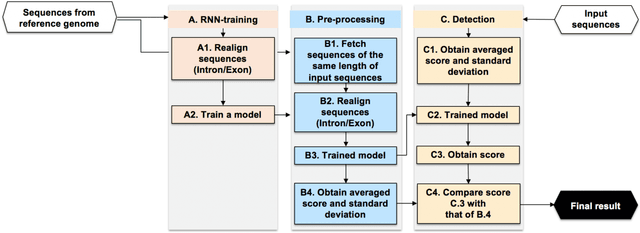DNA Steganalysis Using Deep Recurrent Neural Networks
Paper and Code
Oct 05, 2018



Recent advances in next-generation sequencing technologies have facilitated the use of deoxyribonucleic acid (DNA) as a novel covert channels in steganography. There are various methods that exist in other domains to detect hidden messages in conventional covert channels. However, they have not been applied to DNA steganography. The current most common detection approaches, namely frequency analysis-based methods, often overlook important signals when directly applied to DNA steganography because those methods depend on the distribution of the number of sequence characters. To address this limitation, we propose a general sequence learning-based DNA steganalysis framework. The proposed approach learns the intrinsic distribution of coding and non-coding sequences and detects hidden messages by exploiting distribution variations after hiding these messages. Using deep recurrent neural networks (RNNs), our framework identifies the distribution variations by using the classification score to predict whether a sequence is to be a coding or non-coding sequence. We compare our proposed method to various existing methods and biological sequence analysis methods implemented on top of our framework. According to our experimental results, our approach delivers a robust detection performance compared to other tools.
 Add to Chrome
Add to Chrome Add to Firefox
Add to Firefox Add to Edge
Add to Edge